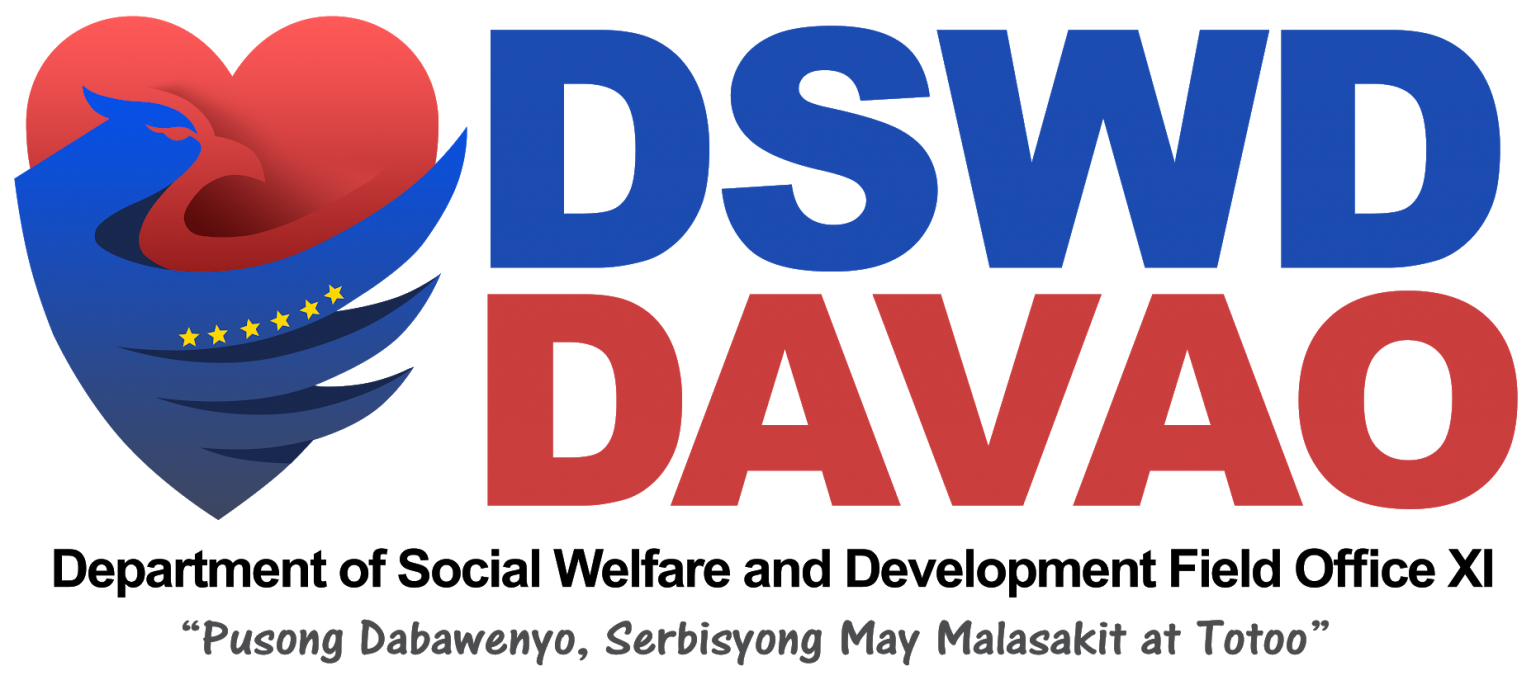TALAINGOD, Davao Del Norte -Talaingod, situated at the highest peak of Davao del Norte and home to the Ata-Manobo people has unique features. About eighty percent of its land is covered under ancestral domain which is generally idle and undeveloped. It is a laidback town with many areas sans electricity and other basic utilities. There are only a handful of commercial establishments and economic activities are lethargic. Ergo, real property and other local taxation sources are on the low level. Thus the municipality is largely dependent on the Internal Revenue Allotment (IRA) from the national government.
Since Talaingod is indubitably the poorest municipality in the Province, local and international grants and aids pour in the area. But many of these projects fell short in terms of sustainability. Most of these projects are intermittent and reactive – meaning that they are implemented as aid, relief and immediate cure to exigent medical, health and other social conditions. In large part, this is due to the complexity of involving the communities in project sustainability. Amidst these conditions, Talaingod became a recipient of the KALAHI-CIDSS: KKB (KC: KKB) Project Cycle 2.
The municipality is composed only of three regular barangays. Looking at that statistics alone, one may have the notion that running Talaingod is fairly easy. However, its ninety-eight geographically distant sitios make governance a particularly tedious task.
Considering the unique culture of the people of Talaingod, KALAHI-CIDSS has succeeded where many others failed. The Community-Driven Development (CDD) Process employed by KC is evidently what the sparsely situated communities of Talaingod need.
The following approaches for the meaningful implementation and sustainability of the KC Project and the CDD process were put in place customized to the distinct features of Talaingod and its communities:
Composition of the KC-MCT – The creation of the KC-Municipal Coordinating Team (MCT) is a critical factor in the Project. All the members of the MCT are locales. In fact, some are Ata-Manobos which is a big plus in terms of overcoming language barriers and establishing credibility and trust. With Ata-Manobos in the MCT, the CDD Process is reinforced. With the MCT immersed in the grassroots, riding in improvised motorcycles (locally known as “habal-habal”), treading the highlands, negotiating landslides and mudslides to reach the remotest communities together with community volunteers make the latter more comfortable and open to the MCT and other implementers thus enriching the CDD Process.
Signing of Covenants and Inter-Agency Agreements for Project Implementation and Sustainability – Although the KC Project requires the inclusion of the Provincial Government in project implementation, monitoring and evaluation through a Memorandum of Agreement, LGU-Talaingod and the MCT have established solid linkage with the Province. In fact, LGU-Davao del Norte has provided a complete computer set and other logistics to the MCT. On top of this, the Provincial Gender and Development (GAD) Team spearheaded the conduct of a series of IP culture-sensitive gender sensitivity orientations among the beneficiary communities as part of the social preparation phase.
Provision of Logistics, Technical and Fund Support – Notwithstanding its logistics, technical and fiscal limitations, the LGU of Talaingod has shown great support to KC. It has initially earmarked about P300,000.00 as local counterpart, a huge amount considering the local government’s limited fiscal capacity. This is exclusive of logistical support for other activities including setting up of a separate office for the MCT to ensure its self-directed operation. LGU-Talaingod provides inputs such as planting supplies and materials and technical support especially for sustainable agriculture sub-projects. The Municipal and Provincial Engineering Offices provide engineering support services for infrastructure and structural sub-projects. Support and line offices also take part in the prompt facilitation of documents and data requirements. These ensure that the limitations of the communities in terms of implementing their sub-projects are kept at the minimum and their development direction is attained.
Convergence of KC and LGU Services – During social preparation activities and onsite visits, personnel from different offices accompany the MCT and extend medical, social, engineering and other LGU-anchored services. KC’s community activities have become a venue for “one-stop shop” services where various government agencies converged. The provision of basic services helps alleviate the condition of the communities. Once survival needs are addressed, security and empowerment needs are also dealt with.
Partnership with PLGU and MLGU in Capability Building – During initial community consultations, gender biases surfaced as an issue. Since both the municipal and provincial governments advocate Gender and Development, a culture-sensitive gender module was devised. In the social preparation phase of KC implementation, the MCT and the Provincial GAD Team held gender sensitivity orientations among the beneficiary communities. The indigenous materials and ingenious strategies used during these orientations motivate participants to express their views that usher-in the CDD Process. The Community Affairs Officer of the Provincial Government assigned in Talaingod took active role in the implementation and monitoring phases of the KC sub-projects and helped ensure community participation.
With the above approaches in place, the CDD Process has a great probability to sustain. Considering the priority development thrusts and programs being implemented by the local government, there are strategies which can still be implemented to ensure sustainability of the CDD Process:
Harmonizing SRA-MBN Approach with the CDD Process – Both the PLGU and MLGU use Social Reform Agenda-Minimum Basic Needs (SRA-MBN) Approach indicators in the identification and implementation of poverty-alleviation projects. These SRA-MBN household survey results yield the top ten basic yet unmet needs of each community. The harmonization of SRA-MBN Approach with the CDD Process is mutually beneficial as both warrant community participation in project identification, implementation, monitoring and evaluation. The CDD Process utilizing the SRA-MBN survey results is a potent mechanism to ensure the implementation of community-identified projects. The interplay of these processes is one of the key approaches in sustaining the CDD process.
Continuing Relevant Training and Education – Aside from the initial capability building trainings and seminars on gender, community organizing, teambuilding and leadership, continuing education is essential. The PLGU and MLGU jointly conduct the following trainings and seminars among the individual and community beneficiaries of livelihood and community projects: Sambayanihan sa Barangay; Situational Analysis, Project Implementation, Monitoring and Evaluation (SAPIME); Animal Health; Bookkeeping; Cooperative Organization and Management, and technology transfers on agriculture and fishery production and management. These continuing education strategies will certainly help the communities in sustaining the CDD Process and upgrading their sub-projects.
To develop community volunteers and allow them to gradually assume the task of being community leaders is the essence of empowerment. With this objective, Sambayanihan Seminar and SAPIME Training are potent tools for community volunteers to internalize their roles and defining their tasks as leaders. This mechanism certainly upholds the CDD Process.
Provision of Incentives to Community Volunteers – Granting of incentives must be studied based on the sensitivities and sensibilities of the respective communities vis-à-vis the KC policies. An empowering incentive would be to provide opportunities to community volunteers to share their KALAHI-CIDSS experiences in any external forum.
Inclusion of KC Beneficiary Communities’ Key People and CDD Process in Local Development Planning – To mainstream the CDD Process in the local government planning processes, key people from KC beneficiary communities must be part of the development councils in the respective Expanded Barangay Development Councils, Municipal Development Council and even in the Provincial Development Council. For the CDD Process to sustain, it must be integrated in local development plans such as the Barangay Development Plan, Comprehensive Development Plan, Annual Investment Plan, Annual Implementation Plan and Executive-Legislative Agenda. Participation of community volunteers and MCT members in local development planning would certainly boost their interest and commitment to the Project thus strengthening the CDD Process.
Integration of CDD Process to the regular programs and projects of the LGU – Corollary to the inclusion of KC beneficiary communities’ key people and CDD Process in Local Development Planning is the integration of CDD Process to the priority programs and projects of the LGU. Priority LGU Programs such as MBN, GAD, Livelihood, Agriculture, Animal Dispersal and Health enjoy fund and logistics support from the PLGU and MLGU. Integration of KC sub-projects and the CDD Process to these priority programs ensure sustainability of the former. In particular, the 9-point agenda of the PLGU underlined by the RDR-WHEELS which include: R-Roads and Infrastructure Development; D-Development of Cooperatives in all Sectors; R-Reforms in Governance, Peace and Order; W-Water and Electricity Development; H-Health, Housing, Sanitation and Social Services; E-Education, Culture, Sports and Human Development; E-Environment Protection and Rehabilitation, L-Livelihood, Skills and Development Program, and S-Spiritual and Moral Recovery Program, is entirely in concert with KC sub-projects identified by the communities. With these, sustainability of the Projects is strengthened.
Institutionalization of the MCT – Making MCT an organic part of the local government structure is a key to sustaining the CDD Process. With a competent and committed team to focus on the sustaining implementation of the KC-CDD Process, the objectives of the Project which are to contribute to poverty reduction by (a) empowering communities through enhanced participation in community activities; and (b) enhancing local governance by promoting transparency and accountability practices will prove to be attainable.
Formulation and Implementation of Organization and Management Plan – There must be clear-cut rules and policies for compliance of the beneficiary communities, BLGUs, MLGUs, PLGUs and CSOs involved in the Project. In support to the Memoranda of Agreement signed by the concerned entities are implementing rules and guidelines to ensure that each stakeholder indeed keeps its stake on the Project. This O and M Plan would set the standards in (a) social preparation, capability-building and implementation support; (b) provision of funds for community projects; and (c) monitoring and evaluation.
Clothe Community Organizations with Juridical Capacity – The beneficiary organizations must be formally organized, registered and clothed with legal capacity by appropriate accreditation entities such as the Securities and Exchange Commission, Cooperative Development Authority and others. The community organizations must also be recognized and accredited by the Barangay Council, Sangguniang Bayan and the Sangguniang Panlalawigan. Clothed with legal capacity, the community organizations can broaden their network and stand a better chance at realizing sustainable development. Possessing legal personality empowers the communities to take a direct hand in their development direction.
Continued Provision of Logistics, Technical and Funding Support – The BLGU, MLGU and PLGU should sustain and even increase their support to the Project and the CDD Process.
Launching of Advocacy and Information Education Campaigns – Informed communities are empowered communities. Only when people truly know what the Project is all about could they contribute to its success. Neighboring communities ought to take part in the Project as duty bearers themselves. This can be done through massive information-education drives for the Project to gain as much support as it can and in as many sectors as possible. With the communities informed, the CDD Process is bolstered.
On the whole, what the people expect from the government is simple – equal access to opportunities, social justice and equitable enjoyment to the fruits of progress. Indeed, there is no hard and fast rule to usher in sustaining development but in Talaingod where KALAHI-CIDSS is a byword of genuine service, the Community-Driven Development Process certainly empowers communities. [THE PRECEDING ARTICLE BY CAROL BARRETE OF PLGU DAVAO DEL NORTE WON FIRST PRIZE IN THE REGIONAL KALAHI-CIDSS ESSAY WRITING CONTEST]






